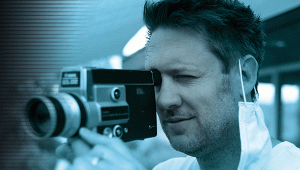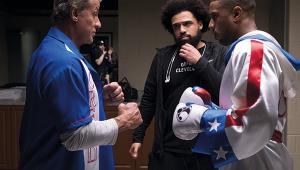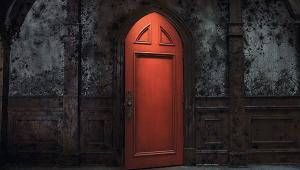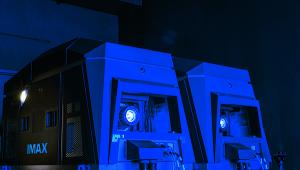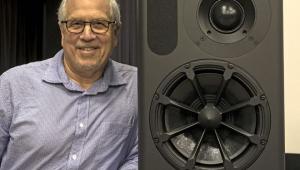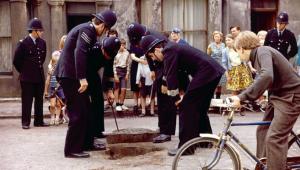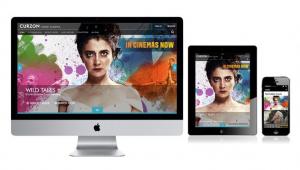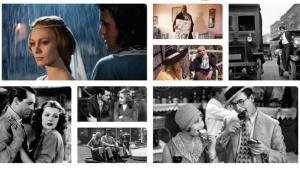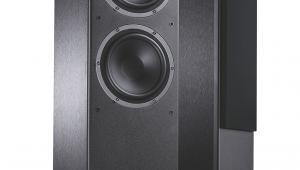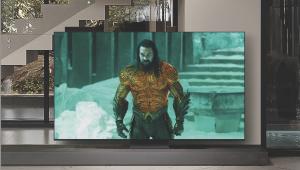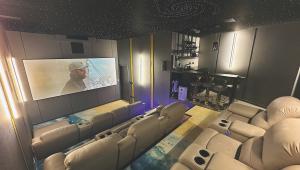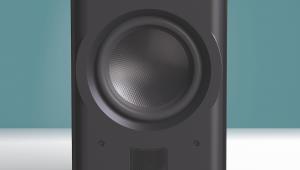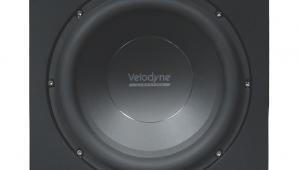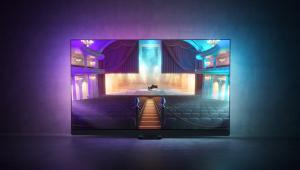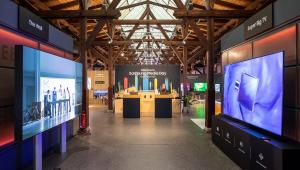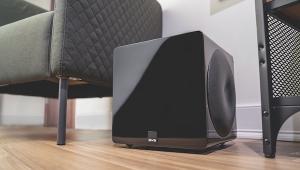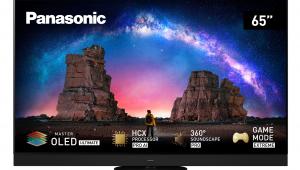The 3D Film Archive: the gatekeepers of 3D movies
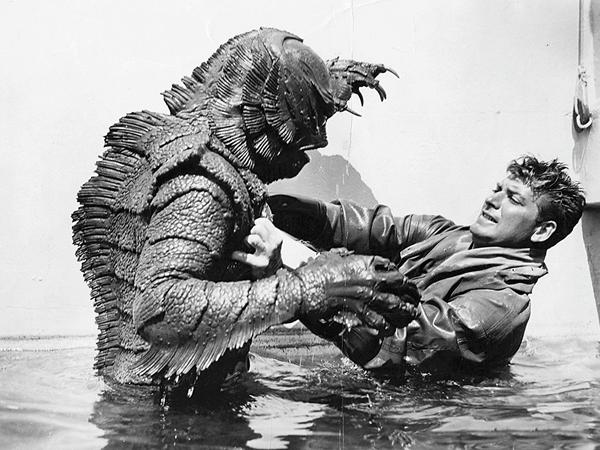
No organisation probably has a deeper understanding of the ups and downs of 3D as the 3D Film Archive. Established in 1990 in the US by stereoscopic movie expert Bob Furmanek, the Archive is dedicated to researching, locating, preserving and screening vintage 3D material, be it feature films or shorts. Its website is a treasure trove of information and investigation, with a focus on the format's 1950s Golden Age – when films including Dial M for Murder, Creature From the Black Lagoon and House of Wax were wowing audiences with their stereoscopic tricks – and the many now lost titles of the 1920s. It has also worked with US Blu-ray label Kino for its releases of films including September Storm and The Mask and with Universal on its 3D BD releases of It Came From Outer Space and Revenge of The Creature (recently released in the US as part of a Creature from the Black Lagoon: Legacy Collection boxset).
Over to the 3D Film Archive's Technical Director, Greg Kintz, for a discussion of the format's past, present and future...
Even now, is there still a big back-catalogue of vintage 3D movies – from the 1950s, '60s
and '80s – that haven’t yet been released on 3D Blu-ray?
Oh yes! At this point we are only now starting to approach the halfway point of full-length features/shorts, and that's just from the 1952-1955 time period. There are far more than that when factoring in the various shorts and film-shot 3D titles from the 1960s to the 1990s.
Are theatrical releases of 3D movies under threat now that TV makers and many Blu-ray labels appear to have given up on the format?
For today's Hollywood, it has always been a simple mathematical formula: do they still make money? When Chicken Little [2005] and the other first Real-D 3D projection systems hit the market, most theatrical chains only charged an average of 50 cents to a dollar more per ticket. Around the time period when Alice in Wonderland came out [2010], theatre chains started raising prices to $1.50/$2 or more for a 3D ticket compared to the 2D version. Ticket sales for 3D showings started to take a predictable hit, but on average even the lower-turnout 3D showings still pay for the conversion costs and make an additional profit. And for Hollywood bean counters, that works.
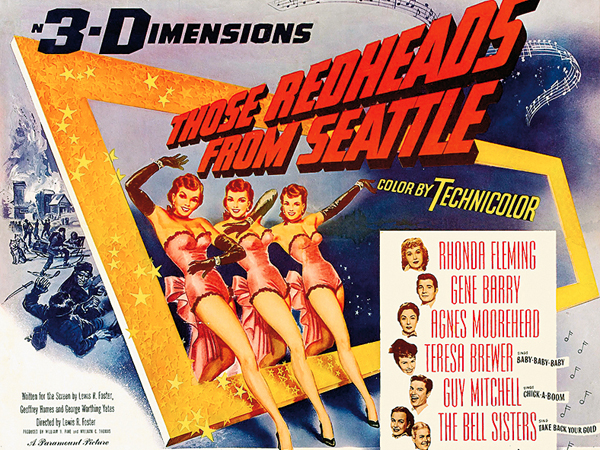
Yet 3D just doesn't seem to have the same reputation now as it did five, six years ago...
Two additional factors have caused an even further decline in 3D sales – poor use of 3D
and improper presentations.
There are movies like Avatar, The Walk, Life of Pi, Gravity, Jurassic World, Guardians of the Galaxy, Thor: Ragnarok and so on that have clearly used 3D as an asset, and those titles typically had higher 3D ticket sales due to word of mouth. But for every 3D title with some thought put into the system, there are just as many titles where 3D simply feels tacked on, neglected, or outright weak. There have been some 3D titles where the 3D effect was so weak you could almost get away without wearing 3D glasses.
The other very disturbing factor is presentation. With today's digital 3D theatrical systems, things should be pretty much auto-pilot. But mistakes happen and consumers often aren't savvy enough to know when things are wrong. I went to a showing of Black Panther and when the 3D trailers started, I could see shadowing in the right-eye view that darkened the top half of the right-eye image. I waited, thinking someone would complain. After two trailers I talked to a manager, whose finger was soon visible in the optical path on screen. No change in picture quality, so I leave the packed theatre and ask to see this in a different screen in 3D later. Skip ahead, and the first 3D trailer starts again. The image was in 3D, but the polarizer had not been engaged so everyone was seeing a double image, even with their 3D glasses on. Again I waited through two 3D trailers then finally complained. They eventually put the polarizer in line for proper 3D by the end of the trailers just before the main feature began.
The driving point here is: how many patrons in a given day, in cities around the world, see improper 3D presentations and are left with a bad experience, even if they don't know exactly what the problem was? And on more than one occasion, I've had theatre managers simply shrug and tell me: 'That's how 3D works with some people', or: 'Yep. That's 3D for ya.' In essence, they are shooting themselves in the foot.
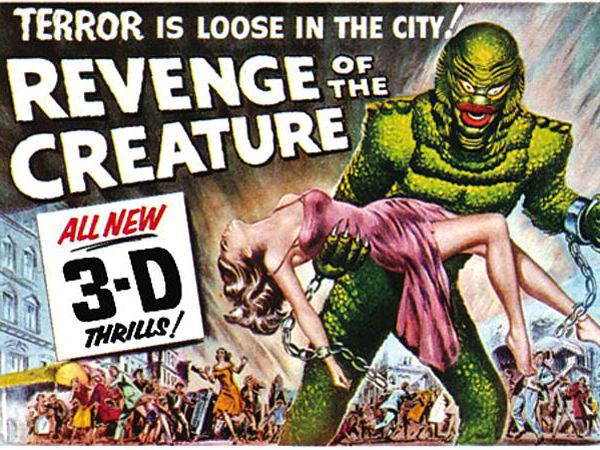
So what do you think the future holds for 3D home entertainment?
I think display manufacturers took the concept of 3D TV, threw it on the wall, and waited to see if it stuck, so to speak. The first 3D TVs adhering to the 3D Blu-ray and HDMI 1.4 specs finally arrived in 2010/2011. The problem was they were overtly expensive, 3D glasses could cost up to $100 a pair, and those pricey glasses were often incompatible with other 3D TVs, even with earlier models made by the same company.
Content was in woefully short supply, and I mean short supply literally for a few years. Display manufacturers would make deals with the studios. For example, if you bought a new Panasonic 3D TV, only then could you get a 3D Blu-ray of Avatar. Want Alice in Wonderland in 3D? That was a Sony 3D TV exclusive.
And the first displays had their own growing pains, with some being dark in 3D, or having excessive ghosting or crosstalk. Polarized 3D TVs addressed some of these issues, but the first polarized sets showed 3D content at half of its vertical resolution.
Things improved. The price of active 3D glasses dropped and standards for the most part were agreed upon. Displays slowly became better. Content became more abundant and the bundled exclusives ended. But display manufacturers had been watching what they threw up on the wall, and in their minds, in those critical first few years, it didn't stick. Vizio [US TV brand] dropped out of the 3D market in 2014. Samsung followed in 2015. LG bowed out in 2016.
But there were more 3D Blu-rays released in 2016 than in any previous year! When Target and Best Buy offered 3D Blu-ray exclusive versions of Rogue One: A Star Wars Story in 2017, all copies in the US were sold out in just over a week, leaving stragglers the option of buying overseas or paying $60+ on eBay. That was often the case, with 3D versions of Kong: Skull Island or Guardians of the Galaxy being back-ordered as not enough in-store copies were made available.
If you visited forums, many of those who bought the 4K/3D combo sets that were briefly offered and had both 3D and 4K/HDR playback would compare the 'new' 4K/HDR version to the 'fading' 3D version and still prefer the 3D version.
It seems 4K and HDR are the all-new 'reasons to buy' for the industry, and the irony is with 4K/3D displays, full 1080p per eye polarized is finally possible. And with HDR pushing displays for increased higher light output, the rare 4K/3D OLEDs are some of the best 3D displays to date.
Quality 3D TVs can fetch extremely high prices nowadays, and some projector companies that initially ditched 3D in favour of 4K have added 3D back to their newer models. Many of those with VR headsets are just now discovering 3D Blu-ray, as they are already viewing in stereoscopic 3D.
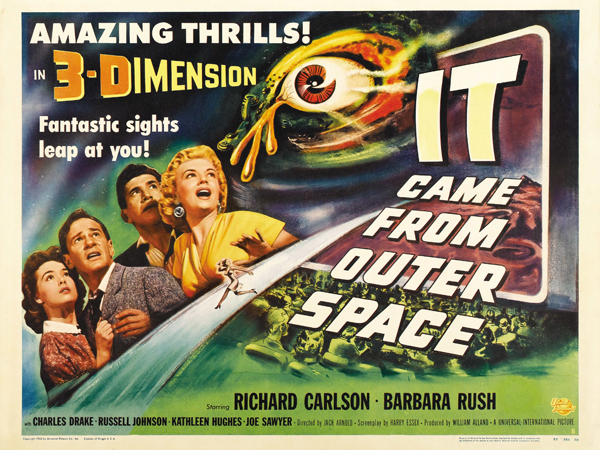
So 3D lives on?
In many circles it has a black eye, and I get that, for all of the reasons mentioned above. Technology and perception is a funny thing, and who knows, there may be a decent auto-stereoscopic display, or other low-cost 3D display option, around the corner where people may look at the infrastructure like 3D Blu-ray and the HDMI 1.4 3D standards and say: 'Wow, most of the hardest work is already done.' The first publicly shown 3D test footage was in 1915, so it only took about 100 years to finally get the delivery infrastructure right.
Some perceive this as the end of 3D, but I remember just a decade ago when there were no 3D standards in place. No titles were available. And all of the 3D hardware, even the horribly expensive and quirky displays, were sub-par and often built to order. Murky red and blue anaglyph 3D experiments would occasionally pop up every decade or so, and always quickly go away. So from my perspective, we have theatrical and consumer stereoscopic options in place where none had existed just over 15 years ago. It took 65 years for some of these titles to finally be shown properly again. And not only are there younger fans who are still appreciating today's 3D, a good number are discovering the older titles we've worked on restoring. They see how the 3D is often superior to what's seen today, so these people put their money in their passions, meaning our titles have a following which ensures even more long-lost 3D classics are in the pipeline.
What’s your favourite 3D movie?
Like any movie, it depends on one's given mood at the time combined with desired genre. For me, sci-fi has always been one of my favourite genres. I'd seen It Came From Outer Space and Creature From the Black Lagoon on television quite a bit as a kid and a few years later found out they were shot in 3D. Bob [Furmanek] and I were recently both fortunate to have handled the 3D remastering for It Came From Outer Space as well as aiding the upcoming 4K 3D restoration of the Revenge of the Creature, as both titles had issues that needed addressing. With Revenge... we worked directly with Universal's restoration team, which has done some incredible work on the original archival elements. I've no doubt it continued to refine the scanned elements well after our part was completed and, like everyone else, I can't wait to see the final version.
As far as recent 3D titles go, there are some that are done well, but only a few have really understood the art form. I personally like a feature with an implementation that really says 'This is a must-see movie in 3D.' One of the best was Robert Zemeckis's The Walk, as the three-dimensional depth really enhances the feel of the World Trade buildings, the enormous scale of the towers, and sense of vertigo during the final act. No matter how large the screen it just isn't the same in 2D. The two Guardians of the Galaxy features also seemed to grasp the need for a deeper 3D experience, and off-screen effects could be quite visceral at times without being gimmicky. I could name more, but the most recent 3D title that utilised the process well was Ant-Man and the Wasp, as stereoscopics helped better convey proper space throughout the feature, be it in giant form or microscopic.
 |
Home Cinema Choice #351 is on sale now, featuring: Samsung S95D flagship OLED TV; Ascendo loudspeakers; Pioneer VSA-LX805 AV receiver; UST projector roundup; 2024’s summer movies; Conan 4K; and more
|


